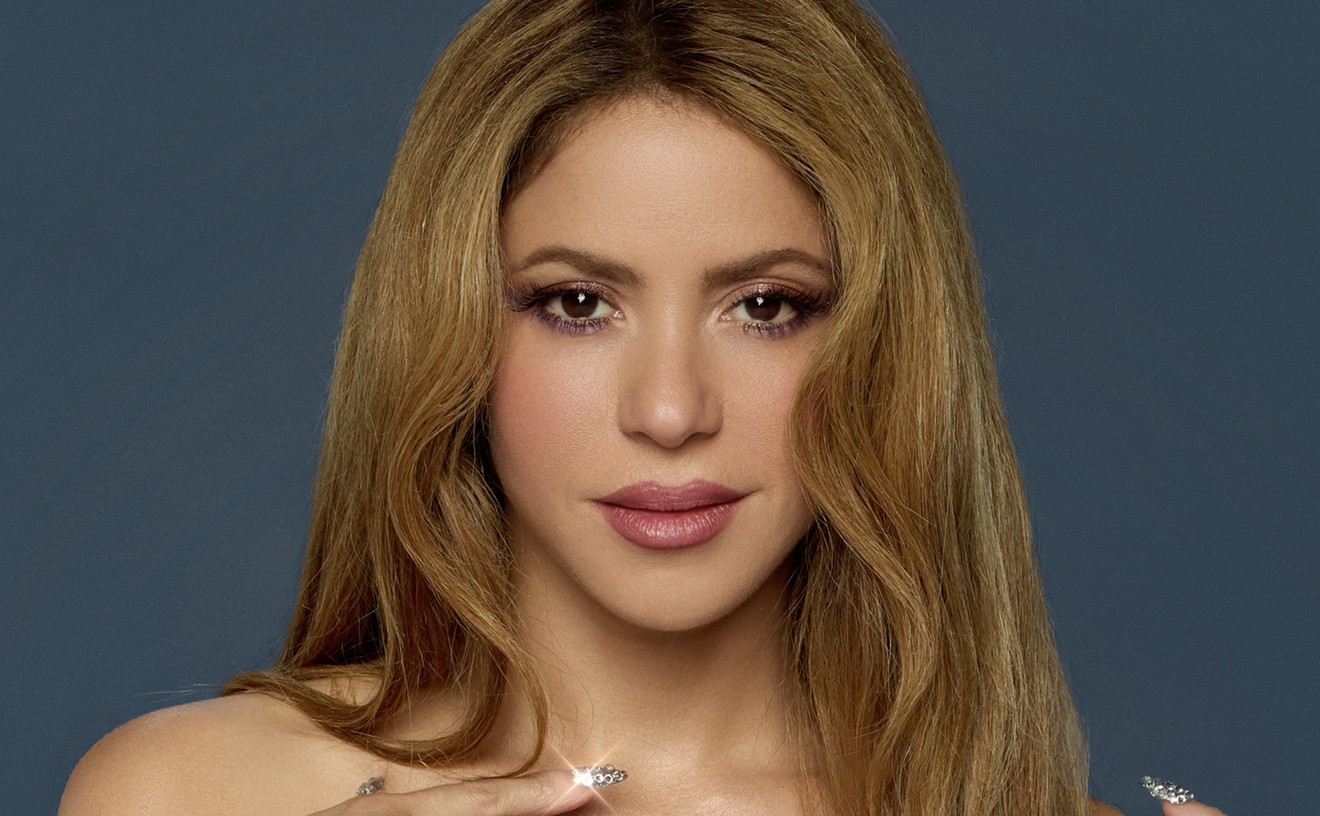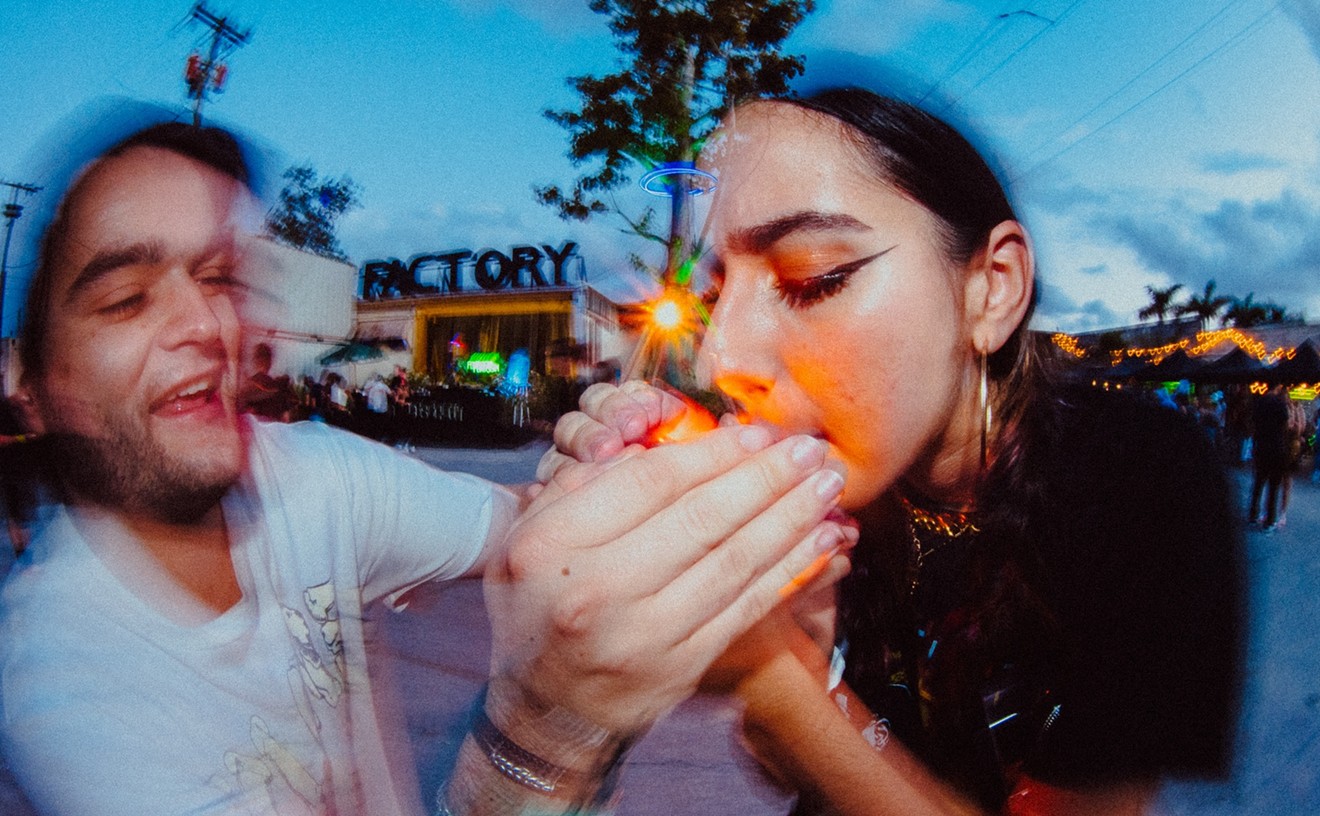Dark clouds hugged the beach, threatening rain as patrons took their seats, but by the time the first drumbeats shook the ground, the sky had cleared. A heavy moon hovered just west of the amphitheater walls. Totó's daughter Euridice Oyaga danced in and out of the moonlight toward the center of the stage, her long black hair flying about her smooth, dark face. Her hips shifted beneath her long skirt, her arms raised high. Totó's son, Marco Vinicio Oyaga, tapped out the rhythm on the tambor (an upright drum). Victor Medrano struck out a sonic boom on the upright floor drum (bombo del piso). The indigenous flutes, called gaitas, frolicked above the drums while the maracas swish-swished with Euridice's hips.
Stopping in front of a microphone, Euridice began to chant rapidly in an African creole. The musicians joined in. Then from off-stage, Totó's voice sliced through the chatter, the layered rhythms of the drums, and the thick, humid air. “Avocado,” she cried in a series of reverberating notes. Calling out the names of fruits and vegetables, Totó swept onto the stage like a market woman barking her wares. Her face as round as the moon and as radiant, this guardian of Afro-Colombian tradition exuded the rare aura of the holy. “Traditional music is passed down from generation to generation,” explains Totó, her face lighting up with a smile that is as beatific up close as it is from the back row.
Totó learned to sing and play from her parents, just as she has taught her own children. As a young girl, Totó was trained not just as a singer but as a cantadora, a wise woman who cures the people of the village through music and dance. Her teacher was Estefanía Caycedo, the mother of lead percussionist Medrano and a foremother of Afro-Colombian folklore who authored the cumbia classics “La Verdolaga” (“The Purslane Vine”) and “El Piano de Dolores” (“The Sorrowful Piano”). Afro-Colombian music soared from a family affair to a source of national pride, in part because of the extensive tours in the Sixties of the dance troupe of influential folklorist Delia Zapata, which featured Caycedo, Totó, and Medrano.
Medrano studied drumming to fulfill a promise to his mother. “There was a festival of bullerengues [the most percussive of Afro-Colombian dances] and the drummer got sick, so there was no one to accompany my mother. I felt so bad that I promised my mother she would never be without a drummer again.” Totó's son Marco says the drums have been the biggest surprise for U.S. audiences: “We simply think that no one knows that there are drums in Colombia.” As Marco recounts the history, drums have been taken up every place along the Atlantic coast where enslaved Africans lived. The African drumming blended with indigenous flutes and maracas to produce what have come to be known as danzas bailadas (dances that are sung).
Although Colombia has its own drumming traditions, the arrival of Cubans who worked in the Colombian sugar cane fields at the turn of the Nineteenth Century brought a version of the Cuban son to the region. “A changui group [sextet from Santiago, Cuba] arrived in Cartagena, where they got to know other musicians,” says Marco. “They adopted songs like “La Verdolaga” to the son and the Colombian musicians adapted the changui to their own music. What came about was a son that's not the Cuban son.” Totó's albums include many Colombian sons and rumbas, but she could not bring along the string or horn sections on this first U.S. tour.
Totó introduced traditional Colombian music to the pop world when she appeared on Peter Gabriel's 1991 WOMAD tour in association with his label, Real World Records. A young British producer working with Real World, Richard Blair, returned to Colombia with Totó, producing her solo release “La Candela Viva” in 1993. So enamored was Blair of traditional Colombian music that he stayed on, producing traditionally influenced pop albums for blockbuster Carlos Vives and altrockers Alterciopelados. “People have told me that's what they're doing,” says Totó with a shrug, when asked about her influence on contemporary pop stars. Even this year's nomination for a Latin Grammy in the category of folklore impresses Totó most because it means she may reach more people.
Spirituality, not popularity, is what interests her. “Through my work I have discovered that the voice is a present given to you so that you can transcend,” she explains. “In order not to lose the voice, you have to work on your spiritual life. You see that we dance with our arms raised,” she says, referring to the typical posture of the cumbia, “because we adore the sun. The caciques [indigenous leaders] had a temple to the sun and to the moon and the stars.”
Given the violence plaguing Colombia, this global cantadora thinks her work is even more important today. “What happens is that one finds the truth when men are sick,” she says. Totó believes traditional music holds the wisdom of the ancestors that will allow people who live today to know who they are. “Colombia is sick,” she observes, “and this illness begins with identity.” The singer believes that traditional music can heal not just the people in her hometown or even in her homeland, but people everywhere. “If I am live on the mountain, I have to sing like the little birds. I have to dance like the animals,” she says. “That doesn't mean that those in the Amazon don't understand or those in the plains don't understand.” The drums bind us, she claims. “We carry percussion in our heartbeats, in the way we walk, in the digestion, in the circulation of blood,” she points out, “and all of us have a heart; all of us have circulation. We share everything that has to do with rhythm.”
The final encore in the last show of her first U.S. tour seemed to prove the point. The drummers had already returned to the dressing room, but Totó granted the request of an autograph seeker that she sing a cappella. The audience, already on its feet after giving her a standing ovation, crowded in a hush at the foot of the stage. Her voice filled the vast open space of the bandshell like a river, tossing the sustained tones that open the traditional cumbia,“La Piragua” like the rowboat in the song's title. Caught in the spiritual flow, the listeners raised their arms in adoration.










